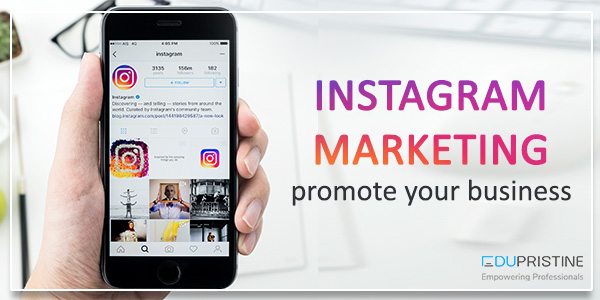
You have now decided to develop your own digital marketing strategy. What's next? You'll find out in this article how to go about the process. This includes choosing your channel, researching your audience, and then the final step. This article will also help you to create a customer path and split test a strategy. This will help you determine if your strategy is working well for your brand. If not, you're not alone. Many businesses have been asking the same question. "How can I create a digital strategy for marketing?"
Researching your audience
Research your audience is key to creating a digital marketing strategy. Quantitative research is a way to do this. It involves surveying large numbers of people and then generating statistical data. If you are looking to create an email campaign that targets a particular audience, for example, you will need to identify their pain points and interests. Similar to their purchase history, you can use this information to determine their buying behavior. Then, you can target your marketing message to the specific audience segments.
You must understand your audience to create a digital marketing strategy that works. Without thorough research, it's impossible to understand your audience's needs and wants. Research can help identify those needs and tailor content to them. Research will also help you predict their needs so that your marketing is more effective. Here are some ways to research your audience.
Interviews: You can use surveys to better understand your audience. Interviews can be conducted with customers, published customer reviews on social media and sent to existing customers. These surveys will provide valuable insights into the personality of your audience. Then, you can create your digital marketing strategy accordingly. Not only is it important to research your audience but also to create a compelling marketing campaign. This will enable you to reach your audience and increase sales.
Segmentation is a way to understand your audience's interests, preferences, and lifestyle so that you can tailor your messaging to them. Moreover, segmentation will help you create a stronger message and engage with them in a more personal way. Adidas sent a separate email for women while the clothing label categorised their audience by gender. Customers buy jeans in large numbers, so a survey asking them how they rate the retailer would result in an average rating of 8/10.
Channel selection
It is essential to choose the right digital marketing channels for your product or services promotion. Your choice should depend on your primary objectives, target audience, competition and budget. Different channels have different results, so choose wisely and decide what works best for you. Your choice of channels will impact the type of content that you share and how you format your ads. Although content marketing remains the king of marketing, and will remain relevant, it is essential to reach your audience.

The goals of your company will determine the decision to use a specific digital marketing channel. Set your short-term and long-term goals. A long-term goal could be to increase revenue by 20% over the next two years, while a short-term goal might be to generate 400 sales qualified leads within six months or increase website traffic by 70% in eight months. So that you can decide which channels will work best, it is important to clearly identify your short-term (and long-term) goals.
Analyze the effectiveness of every channel before you make a decision about which one to use. Each channel has unique strengths and weaknesses. Identify the type of creative content you will need for each channel, as well as its costs. Make sure to use all your available budget before you start using new channels for your digital marketing strategy. Facebook or Twitter is the best way to generate buzz.
A customer journey
Customer journey maps are an important part of a digital marketing strategy. These maps show the path a customer takes from decision to action. The customer journey map serves many purposes. For example, it can show the customer's journey from the initial stage of the sales funnel up to the moment when they become lifelong customers. A customer journey map can help you identify areas where you can make improvements.
In a nutshell, a customer journey map represents a prospect's journey toward purchase. It allows marketers to identify the questions that prospects ask and the difficulties they face along the journey. The higher-funnel levels are designed to increase awareness and create interest. The final stages are dedicated to building brand loyalty. The first step in this process is to create awareness. This can be achieved through word of mouth, social media, search engine suggestions and blogs.
After researching and learning about a brand, potential customers begin the information-gathering phase of the customer journey. Initially, they don't know who you are, but they know what they want. This phase of the Customer Journey should include content that assists customers in making informed decisions. To help customers overcome any remaining obstacles during the purchasing process, brands may offer a free trial period.
By understanding the customer journey map, marketers can target their advertising efforts. Each stage of the customer's journey should have a unique buyer persona. Identifying each stage's goals will help marketers adjust their marketing campaigns accordingly. A customer journey map can also help marketers better understand their target audience by identifying what motivates each stage of the customer's decision-making process.
Split testing your strategy
Split testing in various areas of your digital strategy can make your business more profitable. Split testing can be used to improve headlines, page copy and button text. Images, social sharing buttons, email advertising, call to actions, and social media buttons are just a few examples. Below are some possible scenarios. Split testing is useful to determine which marketing tactics will result in increased sales and profit. Be sure to choose the correct size sample. Split testing should be performed regularly with a suitable confidence rating.
Split testing is a great way to determine whether certain marketing strategies work or not and to identify where you can make adjustments to increase their effectiveness. Split testing also allows you to see if your online advertising strategy is generating leads, and whether it is bringing in return. Split testing can be used to experiment with different versions of a site or particular elements. Split testing allows you to see if the website is earning money. You can then make adjustments to your digital marketing strategy once you know which variants are generating more leads.

ClickFunnels' ad library allows you to test 6 different versions one advertisement. Facebook is another excellent place to get split-test ideas. You can find many examples of Facebook ads and copy them to see which ones perform better. Split tests are possible by using landing pages. Split-testing is possible in landing pages. One example: Moving your CTA to the bottom of the page increased conversions by 304%. However, removing it from the landingpage caused cart abandonment rates drop by 33%.
Split testing is an integral part of conversion optimization. Split testing involves splitting traffic into two groups: the variant and the control group. For split testing, you split traffic so that 50% see the control variation and the other half see the variant version. Splitting traffic into equal segments is used to show the variant version to each segment in a multivariate experiment. Split testing can enhance your digital marketing strategy and you will be amazed at the results.
Measuring the success
Measurement is an important step in any digital marketing strategy. This can be done in a variety of ways. For example, you can track the number of buyers who converted to visitors. You can also use other metrics to assess the effectiveness of a campaign such as page views. These metrics can be used for determining the success of a campaign based upon its target audience as well as the effectiveness a specific marketing strategy.
To evaluate the success your digital marketing campaigns, you must track key performance indicator (KPIs) to gauge its success. KPIs measure the effectiveness of your marketing teams against a given goal. These targets can be either high- or low-level. These KPIs are helpful in identifying campaign success.
It is also important to establish goals that will help you measure your digital marketing strategy. Consider, for example, how many visits did your website get? Did the content of your website encourage purchase? Are your email marketing campaigns generating more business? Are you getting new business? How many people opened an email and made a purchase? These are just a few examples of what you need to track to determine whether your digital marketing strategy is working. It will ultimately all come down to your goals and objectives as well your digital marketing strategy.
FAQ
What is an SEO strategy?
SEO strategy is essential to ensure you are not missing any opportunities for your business to grow. It's not worth having great content if it doesn’t get found!
SEO strategy can help you build relationships and connections with key industry professionals. You can gain new techniques and strategies from them by tapping into their connections and learning from them.
How can I get started with SEO for my site?
The first step towards getting a Google ranking is understanding what they are looking for when someone searches for your company name or products on search engines like google. This guide will show you how to create content that is highly ranked by Google. Check out our other guides about content marketing.
First, create a plan. Next, consider the type of keywords that you wish to target. There are two types, broad keywords (like "digital Marketing") and specific keywords (like "seo".
The next step is to determine your goals, which could be increasing brand awareness, driving leads or sales.
Once you have defined your goals, it's time to begin writing content. Here are some SEO tips.
Once your content has been created, it's now time to publish it on your blog or site. If you have a website, this might involve updating existing pages. If you do not have a website you can hire a web designer to create one.
After you publish your content, link back to it on relevant blogs and websites. This will make your content more visible and increase its exposure.
What is On-Page SEO?
On-page optimization refers to actions taken within your website in order to improve its ranking in search engines. On-page optimization includes site architecture, page titles and meta tags. Image alt text is also included. Off-page search refers only to activities that do not directly impact your website's ranking. These include social media shares, press release, backlinks, and other activities that can improve your website's ranking.
How do I start SEO?
SEO can be started in many different ways. It is important to first identify the keywords you wish to rank for. This process is called "keyword analysis." Next, you'll need to optimize each website page for those keywords.
Optimizing your website includes creating unique URLs, adding descriptions and meta tags, and linking to other sites. After optimization is completed, your website will be submitted to search engines such Google, Yahoo! and Bing.
To know if your progress is being made, you will need to keep track.
What are the basics of backlinks?
Backlinks refer to links linking to a webpage from another site. They are one the most powerful tools search engines use to identify the location of a page in search results. Because they prove that others believe your content to be valuable, backlinks are particularly useful. If you want to rank highly in search results, you'll need many quality backlinks.
Statistics
- Sean isn't alone… Blogger James Pearson recently axed hundreds of blog posts from his site… and his organic traffic increased by 30%: (backlinko.com)
- 64% of marketers actively create SEO campaigns because they help hit multiple key performance indicators (KPIs), including increasing traffic, helping your site rank for relevant keywords, improving your conversion rate, and much more. (semrush.com)
- Deleting those 10k pages is one of the main reasons that he improved his site's organic traffic by nearly 90%: (backlinko.com)
- 93%of online experiences today begin on search engines. (marketinginsidergroup.com)
- : You might have read about the time that I used The Content Relaunch to boost my organic traffic by 260.7%: (backlinko.com)
External Links
How To
How to choose the perfect SEO strategy for you business
The following factors can help you determine the best SEO strategy for your website.
-
Keyword Research
SEO's primary goal is to rank well for specific terms. You also need to identify negative keyword phrases which aren't relevant to your audience.You might also want to look for less competitive long-tail keywords.
-
Content Strategy
Content marketing is important for all businesses. The challenge for eCommerce sites is to ensure that their products and/or services appear high in search engine results pages. This helps drive sales and increases conversion rates.
Constructing relevant and engaging content that solves problems or offers solutions is a must.
-
Link Building
Links can be vital to rank well in search engines. They help improve your site's credibility and page rankings. However, too many links can reduce your Page Rank score. Therefore, it is essential to establish valuable relationships between other websites.
-
Social Media Marketing
If your website is active on social media channels, it may be a good idea to make use of them to promote your brand. This will encourage others to share your content by sharing it across these platforms.
-
Website Structure
While good design may not always lead to higher rankings it can make a significant impact on your website's ranking. A clear, simple layout can improve the user experience, which can lead to increased conversions. It is important that your site loads quickly in order to make sure users don’t leave the site without completing their transactions.
-
Mobile Optimization
Mobile devices account for almost half of internet usage today.If your website isn't optimized for mobile, you could lose out on traffic and potential clients.
-
Local Search
This refers to targeting local markets rather than national ones.Local SEO works by optimizing your website for local searches such as "restaurants near me" or "businesses in my area." It is easier for local SEO to rank well because people trust recommendations from relatives, friends, colleagues and colleagues.
-
Ecommerce Website Development
Ecommerce websites benefit from a range of different types of SEO strategies.For example, they often perform best when they're optimized for both desktop and mobile devices. They can also be ranked higher for long tail keywords.
-
Video Ranking
Videos perform well on search engines. It ranks well on search engines and is shared more often.
-
Branding
Branding is the process of designing a logo, product names, and messaging that gives your company its own identity and personality. This helps customers know who you are and what your company does.
-
Analytics Software
Analytics software allows you to track how visitors interact with your website.The information gathered through analytics can help optimize your efforts and increase conversions.
-
Email List Management
Email lists allow you to send emails directly to your target audience.You can send messages about new products, special offers, and promotions.
-
Blogging
Blogging is another way to generate quality backlinks. You'll attract links from reputable sources when you write blog posts related to your business.
-
Customer Satisfaction
Customer satisfaction is one of the most effective ways to get high-quality backlinks.When satisfied customers refer their friends and colleagues to your site, this will result in quality backlinks.
-
Content Marketing
Content marketing involves producing unique, useful, relevant content that educates, entertains, or inspires readers.
Engaging content can help you build trust with your target audience, and increase conversion rates.